|
Post by Arielle Haughee Five Essentials |
| Tonya Spitler is the author of the Focus Journal The Caregiver's Journal for Avoiding Burnout. She is also a contributing author to the upcoming anthology Along the Shore: Strategies for Living with Grief edited by Cheryl Lynn West. When she isn't writing or reading, Tonya is homeschooling her three tween/teen children. Tonya is a recent transplant to the central Texas area and enjoys exploring her new home with her family. Currently, you can find Tonya at her website www.anovelchoicellc.com or on Instagram @anovelchoicellc or Facebook https://www.facebook.com/anovelchoice/. |
Guest post by author Dawn Milstrey
On Creativity
After experiencing someone’s work, be it a book, a painting, a performance, etc., the first thing most people ask is where do you get your inspiration? It is a simple question, with a complicated answer summed up in one word…creativity.
Creativity lives inside all of us in one form or another. How we act on it is what separates the writer, the artist, and the performer, from the reader, the connoisseur, and the audience. Although divided, each of these groups are equally important to
the delicate balance of creativity.
For some, the pull to act on their creative impulse simply can’t be ignored. The intensity builds inside them and makes its presence known when one least expects it, and it lingers long after the moment passes. Eventually, it pushes forward from
within, tugging at their soul, insisting that they take hold of it and act on impulse, resulting in an expression which is then privately savored by the individual or bravely shared with the world.
This relentless, overwhelming, sometimes madcap creative rush is summed up in the following example written to express the emotion that drives the result...
Creativity lives inside all of us in one form or another. How we act on it is what separates the writer, the artist, and the performer, from the reader, the connoisseur, and the audience. Although divided, each of these groups are equally important to
the delicate balance of creativity.
For some, the pull to act on their creative impulse simply can’t be ignored. The intensity builds inside them and makes its presence known when one least expects it, and it lingers long after the moment passes. Eventually, it pushes forward from
within, tugging at their soul, insisting that they take hold of it and act on impulse, resulting in an expression which is then privately savored by the individual or bravely shared with the world.
This relentless, overwhelming, sometimes madcap creative rush is summed up in the following example written to express the emotion that drives the result...
Creativity's Sweet Rush
It always seems to wash over me late at night when the house is quiet, and the day is done and it’s time to lay down and recharge body and soul for the next day.
I try to ignore it, to close my eyes and drift into a peaceful slumber, to lightly dream of flowers gently peeking through the warm earth and slowly stretching up, up, up towards the bright sun. Their pale green stems are topped with swelling buds, hiding
their colorful gifts within.
Soon, in my mind’s eye, all at once as if on cue, the buds dramatically explode one after another after another after another, their intense colors like fireworks against the deep green grass of summer.
And once again…I’m wide awake.
The relentless creative rush has reached right into my peaceful dream and grabbed hold of me demanding that I produce, insisting that I rip my talent from within, shaping it and molding it until I feel that satisfaction of completion, of pride, of
willingness to place it on display for all the world to see…my inner most feelings expressed in my art set out and exposed to anyone and everyone.
I wish I could bottle that intense feeling of passion and enthusiasm that only seems to come in the darkness of night, sealing it up to keep it fresh and bubbly and flavorful, holding it’s drive and intensity within the glass. Once captured, I would save it for times in the daylight when I really wanted to be clever and productive, when I really NEEDED to be clever and productive.
Pulling it from the shelf I would drink it down all at once and feel it quickly spread through me, that sweet rush reaching every spot where my creativity hides, just when it really needs to be found. Its intense flavored effervescent would take hold of me, bubbling up, up, up, and out as inspiration spills through my eyes and hands.
Wide awake and having given in to the undeniable need to create, I now think about that sweet rush all bottled up in my mind, sparkling within its imaginary glass vessel, bubbling with real possibilities. I hold onto that thought as I imagine how it would taste like ice cold grape soda on a hot summer day, cool and sweet as it quenches my thirst and rejuvenates my soul.
My mind then quickly fixates on thoughts of summer, of the warm sun on my skin, a cool breeze blowing through my hair, making the strands dance about like the branches of tall trees in the meadow just beyond my flower garden where pops of color paint the summer day in bright cheerful hues, filling the bucolic scene from top to bottom.
In the dark of night, facing my easel I dip my well-worn brush into thick paint and let it glide about in swirly strokes recreating that very garden. It isn’t until the sun begins to rise that I am finished releasing all that was bottled up inside me and I form my name in the lower corner, completing that moment in time now frozen on my canvas.
Satisfied, proud, and willing to place this creation which exists before me on display for all the world to see, my innermost feelings set out and exposed to anyone and everyone, I can finally, once again, drift off to sleep and begin a new dream.
I try to ignore it, to close my eyes and drift into a peaceful slumber, to lightly dream of flowers gently peeking through the warm earth and slowly stretching up, up, up towards the bright sun. Their pale green stems are topped with swelling buds, hiding
their colorful gifts within.
Soon, in my mind’s eye, all at once as if on cue, the buds dramatically explode one after another after another after another, their intense colors like fireworks against the deep green grass of summer.
And once again…I’m wide awake.
The relentless creative rush has reached right into my peaceful dream and grabbed hold of me demanding that I produce, insisting that I rip my talent from within, shaping it and molding it until I feel that satisfaction of completion, of pride, of
willingness to place it on display for all the world to see…my inner most feelings expressed in my art set out and exposed to anyone and everyone.
I wish I could bottle that intense feeling of passion and enthusiasm that only seems to come in the darkness of night, sealing it up to keep it fresh and bubbly and flavorful, holding it’s drive and intensity within the glass. Once captured, I would save it for times in the daylight when I really wanted to be clever and productive, when I really NEEDED to be clever and productive.
Pulling it from the shelf I would drink it down all at once and feel it quickly spread through me, that sweet rush reaching every spot where my creativity hides, just when it really needs to be found. Its intense flavored effervescent would take hold of me, bubbling up, up, up, and out as inspiration spills through my eyes and hands.
Wide awake and having given in to the undeniable need to create, I now think about that sweet rush all bottled up in my mind, sparkling within its imaginary glass vessel, bubbling with real possibilities. I hold onto that thought as I imagine how it would taste like ice cold grape soda on a hot summer day, cool and sweet as it quenches my thirst and rejuvenates my soul.
My mind then quickly fixates on thoughts of summer, of the warm sun on my skin, a cool breeze blowing through my hair, making the strands dance about like the branches of tall trees in the meadow just beyond my flower garden where pops of color paint the summer day in bright cheerful hues, filling the bucolic scene from top to bottom.
In the dark of night, facing my easel I dip my well-worn brush into thick paint and let it glide about in swirly strokes recreating that very garden. It isn’t until the sun begins to rise that I am finished releasing all that was bottled up inside me and I form my name in the lower corner, completing that moment in time now frozen on my canvas.
Satisfied, proud, and willing to place this creation which exists before me on display for all the world to see, my innermost feelings set out and exposed to anyone and everyone, I can finally, once again, drift off to sleep and begin a new dream.
| Dawn Bourdeau Milstrey is the author and illustrator of The Stone Angel Society, an illustrated middle grade ghost novel (Orange Blossom Publishing, September 2022). First in a series, the book is a collection of spooky short stories with just the right amount of ghosts for young readers. Dawn has been illustrating picture books since 2008 and loves helping other authors bring their words to life with her art. When she isn’t writing and illustrating, Dawn enjoys painting large scale landscapes and teaching art and illustration at the local college. Dawn lives in a small town in rural New Jersey where she and her husband raised their three amazing daughters. The family shares their home with two cocker spaniels, a pair of birds, several fish...and a few ghosts! To see more of Dawn’s work, visit her website dawnmilstrey.com, follow her on Instagram @dawnmilstrey or connect with her on LinkedIn! |
Guest post by Jessica L. Beck
I Hope You Dream Big
Children will learn more by what you do than what you say.
I type these words into my phone while sitting on the swing in my backyard. The creaking sound and rocking motion is always enough to lull my one-year-old son to sleep when nothing else works. His hand is gripping my shirt, and his warm face is pressed into my neck. He breathes in and out, softly.
Sometimes when I find myself here, I marvel at this miracle. I sit and look out at the palms in the backyard swaying in the wind. I lean my head back and think, what a blessing.
But sometimes the busy highway of my mind goes in a hundred different directions; the work I am behind on at the office, the dishes in the sink, and the upcoming event that I don't have an outfit that fits for. And every once in a while, my mind wanders in the best way, and I think of story ideas that I would love to tell. I quickly tap notes into my phone and promise I will get to sitting down and writing these soon.
At bedtime, I read my son a book about chasing his dreams; telling him he can be anything he wants to be. I say "Ryan, I hope you dream big," as I see his eyes start to close and feel his body soften into mine.
But, after my son goes to sleep, I end up cleaning, answering overflowing work emails, or prepping meals for the next day. I tell myself that these things take precedence, and I will have time to write someday.
I am realizing that this small pocket of time each evening spent intentionally working on my goals, can one day achieve big results. John Maxwell said it best - consistency compounds.
My best writing has come out of my greatest struggles. I read once that nothing that ever happens to a writer is ever wasted.
As I swing with my sleeping toddler on my lap, I let my mind wander to the day he can sit and read the books and articles that his mom wrote. I am reading a book to him about following his dreams, but really, I am reading it to myself, too.
Sometimes when I find myself here, I marvel at this miracle. I sit and look out at the palms in the backyard swaying in the wind. I lean my head back and think, what a blessing.
But sometimes the busy highway of my mind goes in a hundred different directions; the work I am behind on at the office, the dishes in the sink, and the upcoming event that I don't have an outfit that fits for. And every once in a while, my mind wanders in the best way, and I think of story ideas that I would love to tell. I quickly tap notes into my phone and promise I will get to sitting down and writing these soon.
At bedtime, I read my son a book about chasing his dreams; telling him he can be anything he wants to be. I say "Ryan, I hope you dream big," as I see his eyes start to close and feel his body soften into mine.
But, after my son goes to sleep, I end up cleaning, answering overflowing work emails, or prepping meals for the next day. I tell myself that these things take precedence, and I will have time to write someday.
I am realizing that this small pocket of time each evening spent intentionally working on my goals, can one day achieve big results. John Maxwell said it best - consistency compounds.
My best writing has come out of my greatest struggles. I read once that nothing that ever happens to a writer is ever wasted.
As I swing with my sleeping toddler on my lap, I let my mind wander to the day he can sit and read the books and articles that his mom wrote. I am reading a book to him about following his dreams, but really, I am reading it to myself, too.
| Jessica L. Beck is a Human Resources Professional who writes about human resources, working parents, lifestyle and health. She lives in FL with her son and husband. https://jessicalbeckwriting.my.canva.site/ |
Guest post by Author Stephania Thompson
Literary Adventures:
5 Unique Places to Market Your Book
Are you an author looking for unique and inexpensive ways to market your book? I’ve got some great suggestions for you! My novel, Woven, debuted in June of 2022. Despite an amazing support team and substantial marketing efforts, the process felt a bit like shouting into the abyss.
Maybe you can relate?
It’s daunting, to say the least. There are literally thousands of books published every day. The question is, how are you going to get your book noticed in all that noise?
I won’t pretend to have the answer, but I have a few suggestions if you’re willing to get creative. And the best part? Aside from the cost of your book itself, all these suggestions are entirely free!
If you’re looking for unique and inexpensive ways to get your book noticed and read, maybe you’ll consider taking it on an adventure. And, no, I’m not talking about a safari, or fishing expedition (though, depending on your genre, those might work). I’m suggesting you take your book to a few unexpected places…and then, leave it there!
After comprehensive research (i.e., scouring social media to see what worked for other authors), I’ve put together a list of five creative locations you might want to consider. Leave a copy in all, or just one, and see what happens. You might be pleasantly surprised.
Maybe you can relate?
It’s daunting, to say the least. There are literally thousands of books published every day. The question is, how are you going to get your book noticed in all that noise?
I won’t pretend to have the answer, but I have a few suggestions if you’re willing to get creative. And the best part? Aside from the cost of your book itself, all these suggestions are entirely free!
If you’re looking for unique and inexpensive ways to get your book noticed and read, maybe you’ll consider taking it on an adventure. And, no, I’m not talking about a safari, or fishing expedition (though, depending on your genre, those might work). I’m suggesting you take your book to a few unexpected places…and then, leave it there!
After comprehensive research (i.e., scouring social media to see what worked for other authors), I’ve put together a list of five creative locations you might want to consider. Leave a copy in all, or just one, and see what happens. You might be pleasantly surprised.
Location One: Your Local Library
A library might seem like the most obvious place to leave your book, but you’d be surprised how many authors discount it. Not only are libraries full of voracious readers, but they also have a captive audience that just might be interested in your book.
Consider donating a copy (instructions for submission are usually on the library’s website) or simply leave your book in a public area where it’s likely to be noticed. Additionally, most libraries have a generic form for readers to request books they’d like to read but the library doesn’t carry.
Go ahead and request your book. Ask your loyal, local readers if they will, too. The more requests, the better!
Consider donating a copy (instructions for submission are usually on the library’s website) or simply leave your book in a public area where it’s likely to be noticed. Additionally, most libraries have a generic form for readers to request books they’d like to read but the library doesn’t carry.
Go ahead and request your book. Ask your loyal, local readers if they will, too. The more requests, the better!
Location Two: Coffee Shops
Coffee shops and cafes are fantastic places to leave your book…but be strategic.
Is there a couch where people lounge with their food or beverage? Leave a copy beside it, or on a table nearby. Some cafes already have bookcases in place for readers to swap. Take advantage of this space and leave your book for readers to discover. See someone reading a comparable book? Take the opportunity to make a recommendation and offer them a free copy. The possibilities are endless. You never know who you or your book might connect with!
Is there a couch where people lounge with their food or beverage? Leave a copy beside it, or on a table nearby. Some cafes already have bookcases in place for readers to swap. Take advantage of this space and leave your book for readers to discover. See someone reading a comparable book? Take the opportunity to make a recommendation and offer them a free copy. The possibilities are endless. You never know who you or your book might connect with!
Location Three: Local/Independent Bookstores
Bookstores are another great place to leave your book.
Try to find a spot that is heavily trafficked, such as a café table or a reading corner, or even the new release display. If you’re feeling especially adventurous, locate the section where your book would likely be shelved and place it there!
Additionally, don’t be afraid to approach local and/or national booksellers about stocking copies of your book. Many stores feature local or independently published authors, some exclusively so. It never hurts to ask.
Try to find a spot that is heavily trafficked, such as a café table or a reading corner, or even the new release display. If you’re feeling especially adventurous, locate the section where your book would likely be shelved and place it there!
Additionally, don’t be afraid to approach local and/or national booksellers about stocking copies of your book. Many stores feature local or independently published authors, some exclusively so. It never hurts to ask.
Location Four: Airports
Airports are full of people looking for something to do while passing time, and many of them are readers. Leave your book in a highly visible spot, such as near a check-in desk or in the lounge area. If you can, try to leave multiple copies. Imagine all the places in the world your book might travel!
Location Five: Local Businesses
It’s likely you know some local businesses that would be interested in your book (hair salon, dentist, bank, etc.). Think of places where people tend to stand in line or wait for long periods of time. Leave a few copies of your book in an accessible area or ask the employees to spread the word. Perhaps they will become your next greatest fan.
These are just a few unique places to leave your book, but I’ll bet you’re already thinking of others. Want to up the ante? Sign the inside cover and leave a business card or bookmark. Write a brief note thanking the reader for their interest. Ask for a review or recommendation if they enjoyed it. There’s no telling what word of mouth can do!
These are just a few unique places to leave your book, but I’ll bet you’re already thinking of others. Want to up the ante? Sign the inside cover and leave a business card or bookmark. Write a brief note thanking the reader for their interest. Ask for a review or recommendation if they enjoyed it. There’s no telling what word of mouth can do!
I hope these suggestions have your creative juices flowing. If you have another unique marketing ideas, be sure to drop a comment below. Do you have a book marketing success story? We’d love to celebrate with you and share our literary adventures together!
Thanks for reading, and best of luck!
Until next time…
Thanks for reading, and best of luck!
Until next time…
| Stephania Thompson is an award-winning author, poet, and freelance writer. She published her first full length novel, Woven (Orange Blossom Publishing) in 2022, and is hard at work on book number two. When not writing, working, or running after kids, she enjoys hiking with her doodle pup and a good audiobook. Learn more about Stephania and connect with her online www.stephaniathompson.com |
Guest post by Danielle Hines
Who She Was
"I was a writer too, you know," she said over the phone after asking me about my idea for a novel. This didn't surprise me. My grandmother was thoughtful, intelligent, intuitive, and empathetic—all cornerstones of a great writer. And immediately, my storyteller's brain imagined her in the 1930s, pen and paper in hand with her hair just so. Or perhaps she clacked away at a typewriter until her story or poem took shape. Of course, back then, love and marriage called. Children beckoned. But I didn't detect an ounce of regret in her voice, simply: "It's in your veins."
Feeling Seen
Every child in this world just wants to feel seen. And I think it's a talent to be able to see a child—past their behavior, straight through to their innocent little heart. It's a talent that can be honed, but it's also a gift that has been bestowed on some in a life-altering way. My grandmother, Norma, was one such person.
When I say life-altering, I mean for the people blessed enough to know her, to be loved by her. I have many cousins, but I think I speak for us all when I say our grandmother saw us. She knew each of us in a way that maybe our parents couldn't—being bogged down with the day-to-day stresses of raising a family. As kids, my brother and I would fly out West to stay with my grandparents over our summer holidays and I can say with full certainty that, during our stay, my grandmother spoke of each of my cousins at some point with a proud and glowing heart. We knew we were her world.
And somehow, she managed to love this way effortlessly. She was not a woman who was kind so that you would like her. She did not do things for others while secretly wanting recognition. She was naturally giving and loving.
I remember standing in line with her at the grocery store. First, she'd say, "Oh, Danielle. We forgot those cookies you love (Peak Freans and Viva Puffs). Go and grab them." And then she'd endear herself to the person ringing us through. She'd say, "This is my granddaughter and she's visiting us from Ontario." And inevitably, the grocery clerk had family there too and five minutes later, I'm certain Grandma had made yet another person's day. My adolescent irreverence would try to be annoyed at how long this often took but I never could quite muster it. She was just that good.
When I say life-altering, I mean for the people blessed enough to know her, to be loved by her. I have many cousins, but I think I speak for us all when I say our grandmother saw us. She knew each of us in a way that maybe our parents couldn't—being bogged down with the day-to-day stresses of raising a family. As kids, my brother and I would fly out West to stay with my grandparents over our summer holidays and I can say with full certainty that, during our stay, my grandmother spoke of each of my cousins at some point with a proud and glowing heart. We knew we were her world.
And somehow, she managed to love this way effortlessly. She was not a woman who was kind so that you would like her. She did not do things for others while secretly wanting recognition. She was naturally giving and loving.
I remember standing in line with her at the grocery store. First, she'd say, "Oh, Danielle. We forgot those cookies you love (Peak Freans and Viva Puffs). Go and grab them." And then she'd endear herself to the person ringing us through. She'd say, "This is my granddaughter and she's visiting us from Ontario." And inevitably, the grocery clerk had family there too and five minutes later, I'm certain Grandma had made yet another person's day. My adolescent irreverence would try to be annoyed at how long this often took but I never could quite muster it. She was just that good.
Summers in British Columbia
My grandparents' home on Pender Island was the stuff of childhood dreams. Perched over the Pacific Ocean, the views were incredible. To be able to grow up spending summers seeing killer whales, sea lions and bald eagles was a blessing, to say the least. And indoors, Grandma's cooking and keen attention were a soft place to land at the end of a busy day. She taught me to play cribbage and 'Go Fish.' She introduced me to angel tea and peaches and cream pie. She let me watch soap operas with her. And I remember how much she disliked it when my brother and I fought. Like, it didn't just irritate her, it hurt her. And wow, even now, the thought of hurting my grandma in any way makes my chest go tight.
I was 12 when my grandparents moved to Abbotsford and I was there when they moved. I remember thinking how modern and fancy their new place was. And again, their home was the hub of many family gatherings. My brother and I would continue to visit when we could. I will never forget Matt going through a Kiss phase and bringing the cassette to play for our grandmother. She listened, truly listened, tapping her foot and keeping rhythm with her hand on her knee. And she did this without being patronizing. She was genuinely trying to connect with my brother and his interests.
I was 12 when my grandparents moved to Abbotsford and I was there when they moved. I remember thinking how modern and fancy their new place was. And again, their home was the hub of many family gatherings. My brother and I would continue to visit when we could. I will never forget Matt going through a Kiss phase and bringing the cassette to play for our grandmother. She listened, truly listened, tapping her foot and keeping rhythm with her hand on her knee. And she did this without being patronizing. She was genuinely trying to connect with my brother and his interests.
It takes a Village
My grandmother loved my grandfather, her children, grandchildren, great-grandchildren and great-great-grandchildren fiercely. But her love was never an us versus them kind of thing. Her love was all-encompassing. She noticed and remembered so much about even the people we loved. If it mattered to us, then it mattered to her. My best friend as a kid had always wanted to be a chef. When she was thirteen, she showed my grandmother her take on a grilled cheese (which was basically to add Dijon mustard). For years afterward, she'd say: "Tell Olivia I still put Dijon mustard on my grilled cheese!"
I can only hope I've inherited some traits from Grandma. Like listening. Even now, I can see her sitting with my Aunt Sharon or Linda, or with one of my cousins. She's holding her mug of coffee, listening intently, nodding, giving her full attention, offering a kind word, understanding, a safe space. We all need someone like this in our lives. I'm glad I got to see it growing up so I can try to emulate it now.
She was so proud of all of us, and we knew it. And proud doesn't begin to describe how we feel about her.
I can only hope I've inherited some traits from Grandma. Like listening. Even now, I can see her sitting with my Aunt Sharon or Linda, or with one of my cousins. She's holding her mug of coffee, listening intently, nodding, giving her full attention, offering a kind word, understanding, a safe space. We all need someone like this in our lives. I'm glad I got to see it growing up so I can try to emulate it now.
She was so proud of all of us, and we knew it. And proud doesn't begin to describe how we feel about her.
She was a writer
Grandma was a writer. She was a wife, mother, grandmother, friend, sister, daughter. But more than these, she was a model of how to be in this world. Through ups and downs, through life's wins and losses, she remained kind, never disillusioned. Everyone who was fortunate enough to be in her presence left her feeling better than they did before.
She did that. That is who she was.
Photo courtesy of Sharon Hilts.
She did that. That is who she was.
Photo courtesy of Sharon Hilts.
| Danielle Hines is the author of the upcoming Sweetwood series (2023) and Without Fear of Falling. She is a freelance writer and editor of both fiction and non-fiction. Danielle makes her home with her husband and their three children just outside of Toronto, Canada. To connect with Danielle online, join her on Twitter where she participates in daily writing challenges, and visit her website: writingmiracles.me |
Guest post by Lauren Barineau
The Myth of “The Talk:” The Importance of Talking about Sexuality Early and Often with Kids
For most parents, the thought of having “the talk” with their kids is overwhelming. Not only do we feel unprepared to navigate conversations about sexuality, we worry that we’re sharing more information than our kids can handle, or that we’re giving permission for kids to engage in specific behaviors.
But, research indicates that the more frequently and openly we talk about sexuality with kids, the healthier they are.
Talking with kids early, often, and in age-appropriate ways about topics related to sexuality establishes you as a trusted adult and enables you to shift from having just “the talk” to having many talks through childhood. This helps kids process their attitudes and values around sex, informs their decisions as they get older, and removes feelings of stigma and shame. Below are some general tips for proactively starting conversations with your kids. So, what will you say today?
But, research indicates that the more frequently and openly we talk about sexuality with kids, the healthier they are.
Talking with kids early, often, and in age-appropriate ways about topics related to sexuality establishes you as a trusted adult and enables you to shift from having just “the talk” to having many talks through childhood. This helps kids process their attitudes and values around sex, informs their decisions as they get older, and removes feelings of stigma and shame. Below are some general tips for proactively starting conversations with your kids. So, what will you say today?
Sexuality is more than sex.
Although it’s likely that we grew up thinking about “sex ed” as the mechanics of reproduction and birth (and maybe how to prevent it), sexuality is much more than acts of intercourse. Instead, it’s a big umbrella under which information about boundaries, consent, body safety, friendships, romantic relationships, body image, gender roles, sexual orientation (and more!) falls. In our digital age, this even expands to sexting, pornography, and digital communication. And, starting the conversation about body parts and personal boundaries in small ways with your little kid helps you navigate conversations about asking for consent for sex as they grow into your big kids.
Avoiding the conversation is saying something about sex.
Many people are uncomfortable talking about sex with their kids - it’s understandable! Common reasons for this are that adults are worried they don’t know the answer or that kids aren’t developmentally ready. When you choose not to have critical conversations, kids are still learning about sex, but they’re learning that it’s something that your family doesn’t talk about, or that it’s shameful or bad. When parents avoid discussing sex, kids and teens feel closed off from important and reliable information and will likely seek information from less reliable sources.
Start small and gain confidence.
Committing to having positive and proactive conversations about sex doesn’t mean that you have to start at the deep end. Start where you feel comfortable, whether it’s explaining diverse families, or that most boys have a penis and most girls have a vulva, or perhaps that it’s okay to say no to hugs and kisses from family members you don’t want. The more often you talk, you’re letting your child know that you’re a trusted adult they can seek out for answers and you’re building your own muscle for more complicated conversations as kid’s get older. All conversations about sexuality, even small ones, normalize talking about it in safe and positive ways.
Clarify your own values about sex.
We all have values about sex (and not just about when it’s the right time for the first time). Talks about sexuality between families should include values and facts. It’s important to think about your sexuality values and consider how you might communicate those values to your kids. For example, have you ever considered how you feel about body hair removal? Who should remove hair? At what age? From which body parts? All of those answers reflect your values about that behavior. Also consider what influenced your values. It may be that they were based on generational differences, religion, or are rooted in bias about gender, sexuality, or race. Once we know what we believe and why, it becomes easier to share our values with our kids.
| Lauren Barineau, MPH, CHES, is the founder of Talk More; focused on positive and proactive conversations about sexuality among families. A dynamic facilitator with 15 years of experience as a sexual health professional, Lauren has a depth of experience working with schools, youth, and communities in support of effective sexuality education on local, state, and national levels. Lauren started Talk More to change the narrative around sexuality conversations in families and communities, making these talks more positive and frequent, less shaming, and integrated seamlessly as a part of every person’s childhood. Lauren earned her Master’s in Public Health from Emory’s Rollins School of Public Health and lives and works in Atlanta, GA with two little ones who challenge her to think creatively about this work every day. She can be found at www.talk-more.org |
Post by Author Arielle Haughee
A Step-by-Step Book Marketing Timeline
Often when writers hear marketing, they turn and run screaming. Well, maybe not literally, but the word definitely causes anxiety for many. Questions abound: What do I do? When? How do I do it? How much time will it all take? Do I have to? Here is a quick answer: You will get out of marketing what you put into it. No marketing, no sales. But that doesn’t mean you have to spend every waking minute with a megaphone shouting on the street corner: “Buy my book!” (Please don’t.)
Just like one plotting method doesn’t work for all writers, one marketing plan won’t work for every author. The key is to think about what resources you have, including time, people, and money, and make them work the best for you. Marketing is like a science experiment. Test something out and see if it works. Sometimes it will and sometimes it won’t. The key is to learn as quickly as you can what does work for your particular book. And remember that this is a marathon and not a sprint. If you stop marketing after your pub day, your sales will stop, too.
Just like one plotting method doesn’t work for all writers, one marketing plan won’t work for every author. The key is to think about what resources you have, including time, people, and money, and make them work the best for you. Marketing is like a science experiment. Test something out and see if it works. Sometimes it will and sometimes it won’t. The key is to learn as quickly as you can what does work for your particular book. And remember that this is a marathon and not a sprint. If you stop marketing after your pub day, your sales will stop, too.
When do I start with book marketing?
As soon as you can! The longer you have to make people aware of your book, the more people you will be able to reach. If this is your first book and you don’t have a cover yet, don’t worry. Marketing starts with you making people aware of who you are and what you do. That’s it. My name is Arielle and I am a children’s author. Bam. I just started my marketing with you. Spread the word on social media, when you’re chatting with friends, when meeting new people…it’s something you bring up in conversation. You don’t have to be pushy or salesy, just be yourself and talk about what you do, sharing the joy it brings you.
A Loose Interpretation of the Word “Timeline”
It would be wonderful if all of us had the same amount of ample time to plan the perfect dates to do each task on the timeline below. But that’s not the real world. I see so many book marketing timelines that declare you “have” to release your cover image at exactly three months before you publish, then you “have” to set up preorders at exactly one month and so on. Even worse, there are writers out there who tell other writers that if their book is already out, it’s too late to start marketing. I am going to write this in shouty capitals: IT IS NEVER TOO LATE TO MARKET YOUR BOOK. Yes, it is ideal if you have a marketing plan in place months before your release, but sometimes people don’t learn this until after they’ve already gotten their book out.
So don’t worry. No matter where you are in the publishing process, you can start marketing. I’ve done a full year-long structured plan for a book release. I’ve also only had a few weeks. Last week I did a little experiment to see if I could format a book a bit differently and it ended up working. So this time I will be marketing after the book has already been up on Amazon. The point is: Start wherever you are.
So don’t worry. No matter where you are in the publishing process, you can start marketing. I’ve done a full year-long structured plan for a book release. I’ve also only had a few weeks. Last week I did a little experiment to see if I could format a book a bit differently and it ended up working. So this time I will be marketing after the book has already been up on Amazon. The point is: Start wherever you are.
Book Marketing Timeline
Usually I start by selecting a reasonable pub day, also known as your book birthday. Then I work backwards from there. Remember, jump in whenever you can. There are some things I recommend to do before pub day that you can do afterward. If you are being traditionally published, several of these steps will be completed for you. So, take a look and adjust as necessary to your situation.
Additional Resources
There are a lot of things to do in there! Unfortunately, I couldn’t stop to explain the details of every single step because then I would be writing a book instead of a blog post. So here are some links to help you get more information about different steps:
- Market Research: A Publishing Necessity
- Book Cover Design Basics
- Free 3D book cover maker
- The Online Marketing Trifecta: Websites, Blogs, and Newsletters
- Email Newsletters for Authors: A Get Started Guide
- The Complete Guide to Creating an Author Website
- 10 Tips for Authors on Using Social Media from a Literary Agent
- 30 Book Awards You Should Know About
- Kindle Ebook Preorder Setup
- How to Get Reviews for Self-Published Books
- How to Build a Team of ARC Readers
- Free Amazon Book Advertisement Course: Ads for Authors
- How to Write a Book Press Release Like a Pro
- Book Brush: Make Quick, Professional Book Ads
- Planning Your First Virtual Book Event
Happy marketing!!
| Previously an elementary teacher, Arielle Haughee (Hoy) is a five-time RPLA-winning author and the owner of Orange Blossom Publishing. She is an editor, speaker, and coach. She is the author of The Complete Revision Workbook for Writers, the children’s books Grumbler, Joyride, Pling’s Party, and Sixth Sunday, the editor of the How I Met My Other anthology series, and the creator of the Focus Journal line of journals. She was also honored with the President’s Award from the Florida Writers Association in 2020. She has a serious reading addiction, fantasy romance her absolute favorite, and loves nothing more than good conversation paired with a good wine. She is surrounded by males at home—a husband, two sons, and an energetic dog—and tries to integrate as much purple and flowers in the house as possible. |
Guest post by Caroline Kelley
The Unseen Hero
As the sun rises, so does a mother’s eyes.
Like a well-oiled machine, she begins her day mechanically.
Going through the motions, without skipping a beat- making breakfast, packing lunches, cleaning up spills, dressing herself and her children, school drop offs and driving herself to clock in for an 8-hour shift.
When she clocks out, she fights through traffic to pick up her children from school, gets home, starts the laundry, begins making dinner, helps with homework, cleans, bathes the children, reads them a story, and puts them to bed.
In the quiet hours, while the children sleep, she still works. She finishes laundry, cleans the home, pays the bills, and makes the list for the next day’s tasks.
For 8 hours per weekday, she works for someone else.
For every other waking hour per day, she works tirelessly for her children.
One pays a salary, the other pays with love.
A mother’s work is never finished, you see, as even in the depths of sleep, her mind worries for all the what-ifs, unfinished tasks, and well-being of her children.
Her work is often overlooked and underappreciated, yet she carries on with a heart full of love.
Like a well-oiled machine, she begins her day mechanically.
Going through the motions, without skipping a beat- making breakfast, packing lunches, cleaning up spills, dressing herself and her children, school drop offs and driving herself to clock in for an 8-hour shift.
When she clocks out, she fights through traffic to pick up her children from school, gets home, starts the laundry, begins making dinner, helps with homework, cleans, bathes the children, reads them a story, and puts them to bed.
In the quiet hours, while the children sleep, she still works. She finishes laundry, cleans the home, pays the bills, and makes the list for the next day’s tasks.
For 8 hours per weekday, she works for someone else.
For every other waking hour per day, she works tirelessly for her children.
One pays a salary, the other pays with love.
A mother’s work is never finished, you see, as even in the depths of sleep, her mind worries for all the what-ifs, unfinished tasks, and well-being of her children.
Her work is often overlooked and underappreciated, yet she carries on with a heart full of love.
Guest post by author Bay Collins
Yes! Book Clubs are Thriving.
Reading makes better writers. Writing stimulates analytical thinking. Thinking skills facilitates better communication. Communication inspires better communities and within the communities, starting or being a part of a book club is one of the most engaging activities inside and outside of the home. Regardless of age, millions are using their literacy skills to participate in book clubs in homes, libraires, meeting rooms and there's a shift to join book clubs through social media.
A lifelong learner and reader
The book club concept was founded as early as the 17th century and remains popular today. For many readers, their interest in reading commenced when someone selected and read the books, then the readings progressed to reading with others... a parent, a grandparent, a teacher or a librarian. And in the passage of time, autonomous reading prevailed with masterful creative thoughts and ideas to continue reading books with others.
Read a piece of work you never knew existed
The facilitator and book club members will select a book for the club members to read, members may choose a popular book from the past, books that are book club favorites or books on the best seller list. Books can vary from non-fiction, historical, poetry, mystery to romance and these various genres give the reader a variety of topics to explore and discuss.
Book clubs are a great way to see the world through another person’s point-of-view, sometimes the differences can be quite intense yet informative and these different perspectives encourage communication across generational and cultural differences. This type of learning takes place without a grade, and it helps individual retain information even if the novel is in the reader’s native language or an acquired language.
Book clubs are a great way to see the world through another person’s point-of-view, sometimes the differences can be quite intense yet informative and these different perspectives encourage communication across generational and cultural differences. This type of learning takes place without a grade, and it helps individual retain information even if the novel is in the reader’s native language or an acquired language.
Improve Skills
Being a book club member requires readers to be organized. There is a planned discussion date and readers should complete the novel to engage in a participative discussion. Being prepared may improve your reading speed, time management and can also help individuals overcome fear of public speaking.
Book discussion questions are uniquely aligned according to the book’s content and these questions often center around the characters, plot as well as the author’s insight. These questions are often given to the members prior to the meeting date which helps its members prepare for intellectual discussions.
Book discussion questions are uniquely aligned according to the book’s content and these questions often center around the characters, plot as well as the author’s insight. These questions are often given to the members prior to the meeting date which helps its members prepare for intellectual discussions.
A book club may or may not appeal to you
Book clubs are thriving and often consist of ten or less people. The latest trend is having a book club among family members nationally or internationally, now that is good news. However, it is commendable to know when a book club no longer suits your interest and it’s time to look for one that will meet your expectations to keep you reading ... there is a book club for you.
A final note: Book clubs are free to join and can be as close as a library, bookstore or on the internet. The assigned book for a book club discussion can be purchased or located online.
A final note: Book clubs are free to join and can be as close as a library, bookstore or on the internet. The assigned book for a book club discussion can be purchased or located online.
| I consider myself a lifelong learner and I am pleased to be on this journey of discovery with diverse ideas. My motto is today and reader and tomorrow a leader. I relish my years of teaching children, adults and parenting our two daughters. My leisure times allows me to help children with disabilities improve the quality of their lives by riding horses in addition to riding myself. Remember: “Words are to the mind and soul as food is to the body.” Bay Collyns Bay_Collyns@instragram |
Author
Arielle Haughee is the owner and founder of Orange Blossom Publishing.
Categories
All
For Parents
Getting Into Writing
Giveaways
How I Met My Other
Picture Books
Publishing
Revision
Writing Craft
Writing Goals And Routines
Writing Life
Writing Picture Books
Proudly powered by Weebly
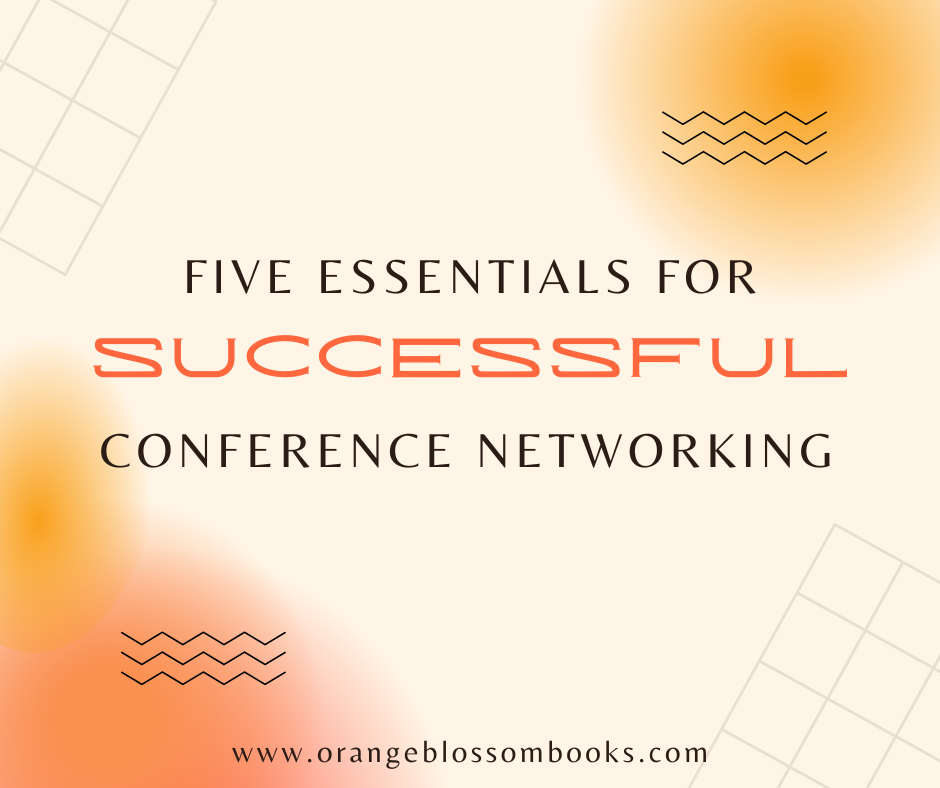

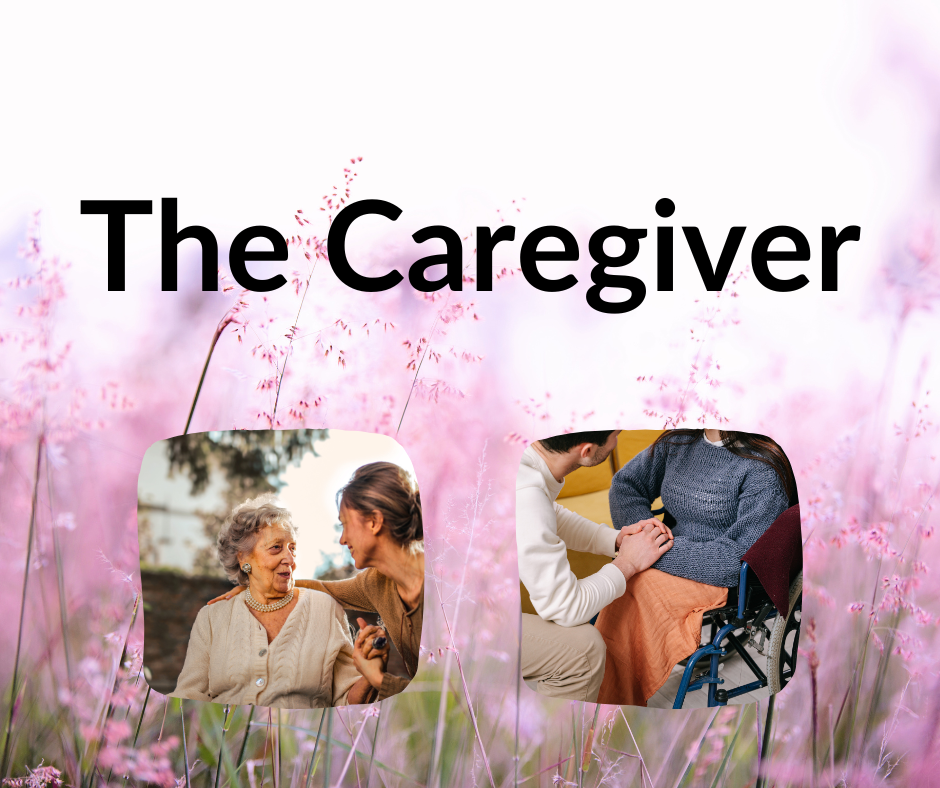
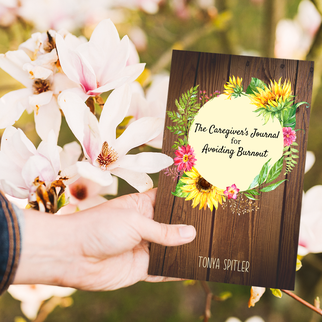







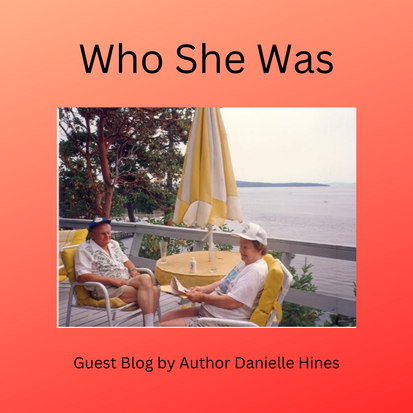
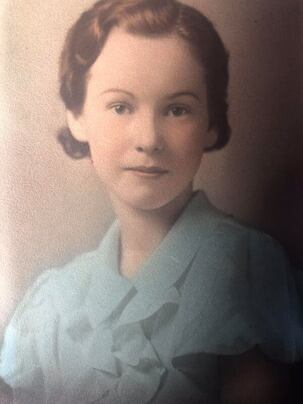

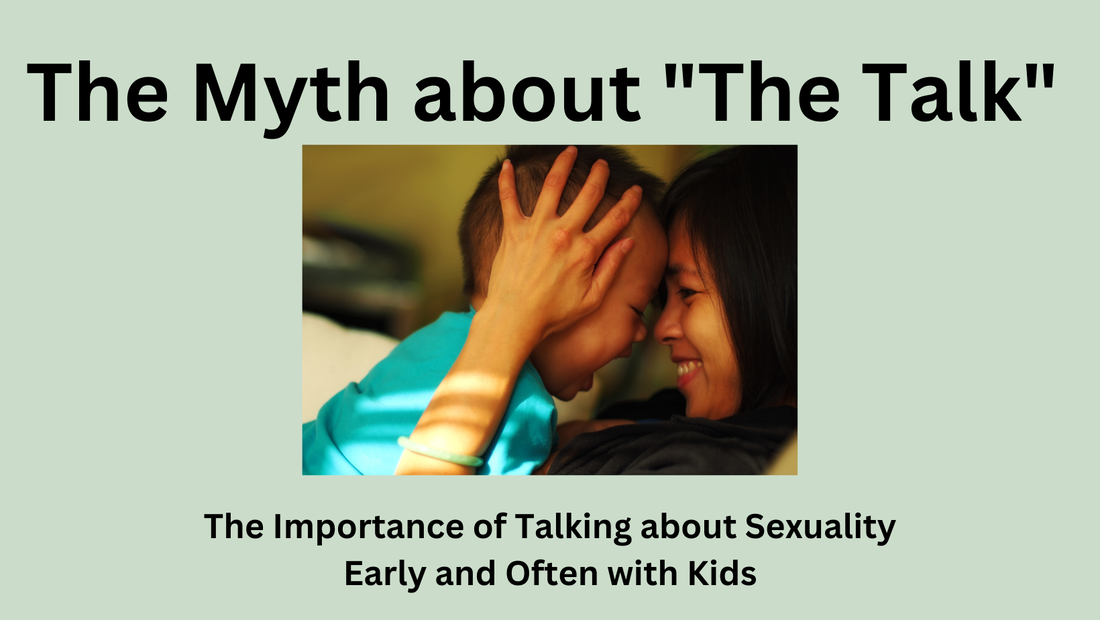

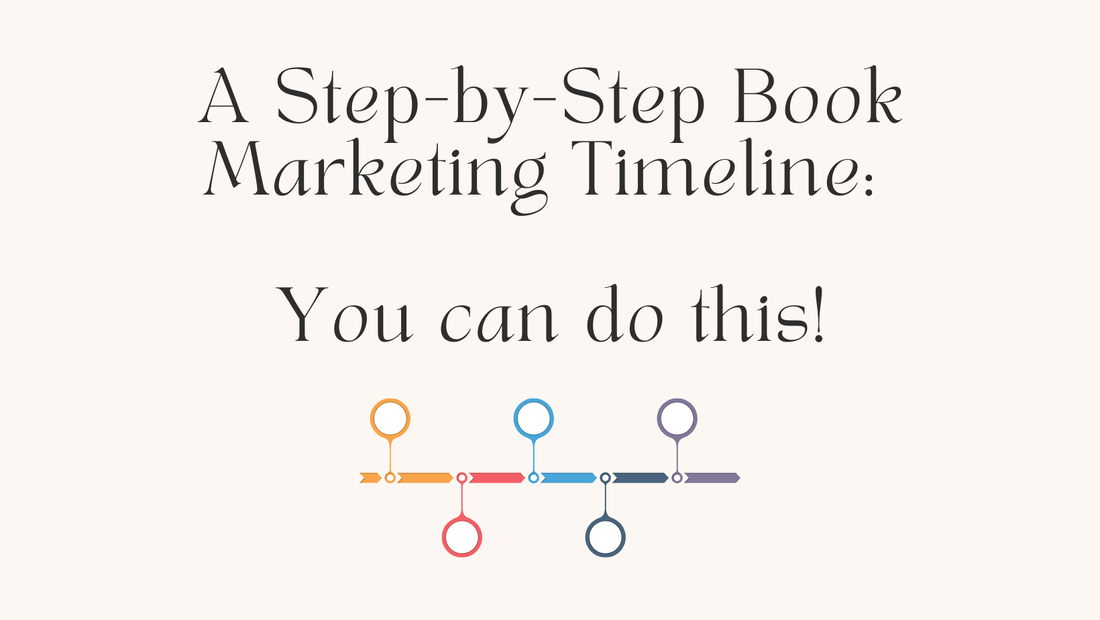
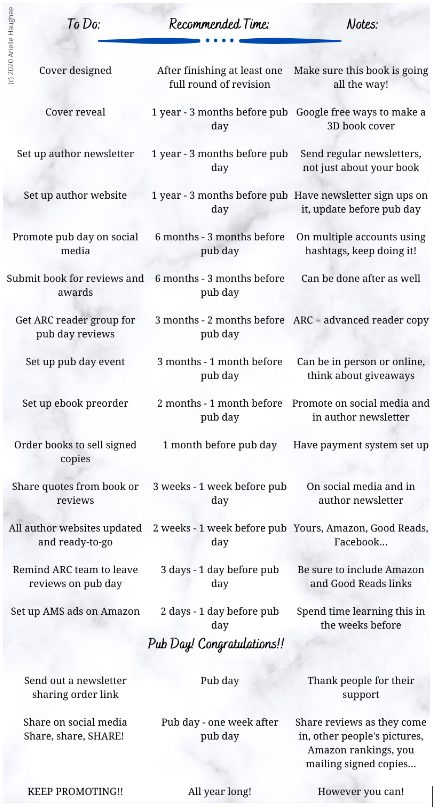


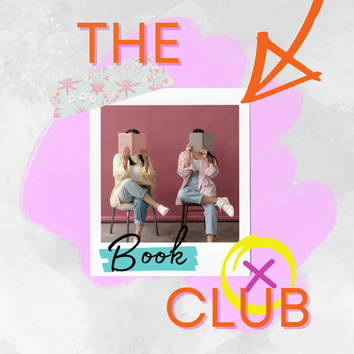
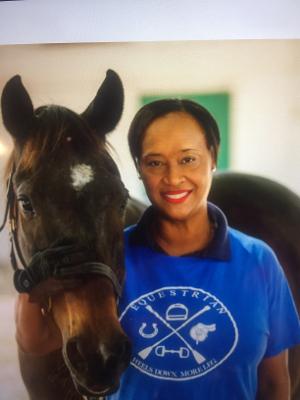

 RSS Feed
RSS Feed